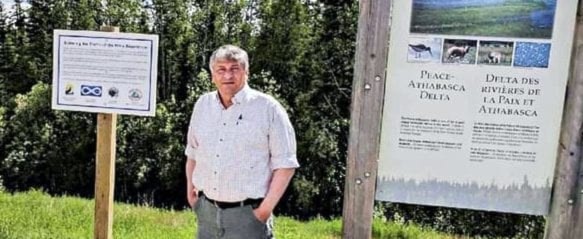Parks Canada has received a new deadline to submit their 27.5 million-dollar action plan to protect Wood Buffalo National Park from becoming an endangered site.
In late June, The UNESCO World Heritage Center warned that if immediate action wasn't taken the park would become listed as an endangered site. The federal government was initially given until December 1 of this year to submit an action plan to address concerns surrounding conflicts in the parks management, deficiencies in governance and cumulative impacts of climate change. That deadline has now been moved to February, 2019.
“Through discussions with Indigenous partners, a request was put forward asking Parks Canada to submit a request to the World Heritage Committee for an extension to the initial deadline for a final Action Plan of Dec. 1, 2018,” stated a spokesperson for Parks Canada over email. “ An extension will ensure that all partners and Indigenous groups have the time to prepare the necessary input and be fully engaged in the development of the final Action Plan.”
The statement continued, stating that a draft action plan will still be submitted by Dec. 1 of this year and there will be public consultations on the plan this fall.

Part of that action plan is intended to address issues in management of the park between the federal government and affected Indigenous groups in the region including the NWT Metis Nation (NWTMN), Garry Bailey, the nation's president says the extension is necessary in order to allow Parks Canada to address all of the concerns surrounding the park.
“The deadline they had wasn't realistic, I don't think anyways,” said Bailey. “I think they needed the time anyways, they have a lot of things going on for sure.”
Bailey said his group is now focused on working with the federal government to ensure that NWTMN is involved in the governance of the park.
“We're trying to deal with the governance of it, and that's a big thing on it's own. We've been involved with them on the environmental aspect, stuff like that already,” said Bailey. “We've just been more involved in monitoring the waters and that. We've put in our concerns with the Athabasca Delta system. You know because it's important to us, it goes down to the Slave River.”
Wood Buffalo National Park encompasses over 44,000 square kilometers of southern NWT and northern Alberta including the Peace-Athabasca Delta watershed, the area of the park that has been deemed the most vulnerable to the effects of industry and climate change.
Last month, the Mikisew Cree First Nation signed a participation agreement with an Alberta oil sand company to work co-cooperatively on mitigating environmental damage caused to the park. Garry Bailey says he was part of those conversations, but is still waiting for his concerns to be recognized.
“We went there and put in our concerns there but we're not being recognized yet,” said Bailey. “They were heard, it just happened so we'll give it some time.”
According to the UNESCO heritage website the park is home to a large population of wild bison and is a natural resting place for whooping cranes. A federal study published earlier this year found that the habitats of both animals in the park is shrinking.
In 2016, 55 bison in the NWT portion of the park died from an Anthrax outbreak.
